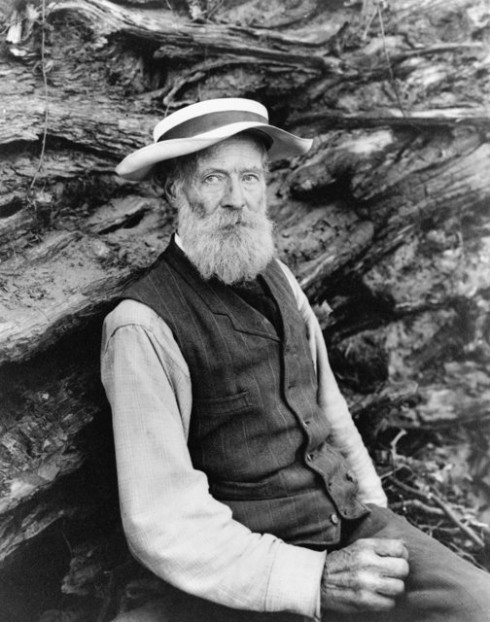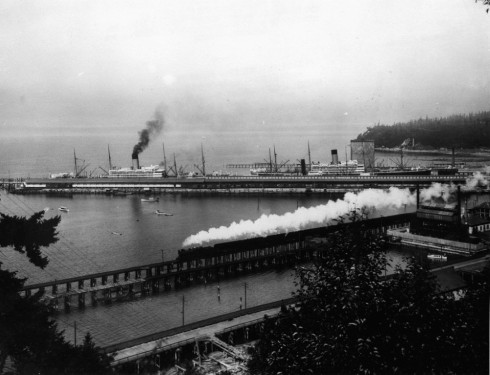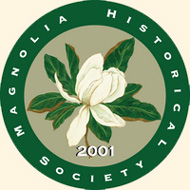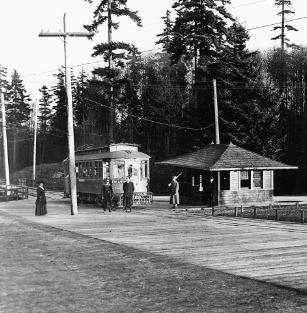Snapshot in Time
By
Monica Wooton
Magnolia Historical Society Board Member
Over 150 years ago…

Dr. Henry Smith as he appeared in his later life. Now more the farmer than the gentleman.
Courtesy of Paul Dorpat
According to Magnolia: Memories & Milestones, Magnolia’s First Pioneer: Dr. Henry A. Smith was 22 when he went west. Demonstrating medical and common sense, Smith brought cholera medicine with him, knowing that the disease was prevalent on the wagon trains. To his credit, his instincts and humanitarianism is said to have saved many lives.
He was most likely not dreaming of bustling commerce, busy steam trains, active docks and lucrative worldwide trade which would all emanate from the place where he would eventually settle—the marshy southern shores of a place eventually named for him Smith’s (Smith) Cove in Magnolia. Medicine was his vocation, agriculture his avocation. He was originally headed for “California Gold Country” to utilize those skills and perhaps strike it rich there.
It was during the trip that some important information was passed on to Smith: “The Northern Pacific Railway announced plans to extend to the Puget Sound…”- a highly undeveloped part of the west. Smith did not miss the implication of the potential cash reality of railroads. He seemed to realize this railroad could bring with it great commerce and economic growth. Soon, this most compelling idea was the one that spurred him onward to Seattle.
Smith traveled from Portland to Puget Sound in a small canoe. Some accounts say a gruff friendly pioneer named L. M. Collins told Smith to pack his duds promising “in three day’s time I will land you in the Garden of Eden…” Along the harbor, Smith saw a bay flanked on both sides realizing it had good possibilities for trains and docks. There he staked a donation claim of 160 acres in 1852.
In 1862, Smith married Miss Mary Ann Genevieve Phelan, lived by Grand Boulevard (now West Dravus Street) and 15th Avenue West, established a medical practice and built an infirmary on the side of his home, grew plenty of fruits, vegetables and raising animals.He practiced medicine, farmed, and dealt in commerce, government work, and Republican politics. He was not one to seek the spotlight and worked quietly about his business: “No sir, I never dabbled in politics. It is true I represented King County five different times, and I was the first Superintendent of Schools King County ever had, but I never asked a man to vote for me in my life, and I never sought office. I didn’t like politics and I didn’t like to hold office, but Lord bless us when I found myself at Olympia. I did the best I could…” this account according to writings by his daughter Ione Smith.
As the Smiths prospered, Mary Phalen Smith gave birth to seven daughters and one son. They left Seattle buying and developing Smith Island to the north. He began a series of experiments to reclaim tidelands, as he had read they had done in Holland. Smith published articles on the subject. He also was a published writer whether it was poetry on the beauty of Puget Sound, his interpretation of the most famous Chief Sealth speech, or agricultural practices,. He left a plentiful collection of written work behind when he died—many under the pen name of Paul Garland.
More than 40 years after Smith staked his claim and bought up thousands of more acres in that area, the Seattle, Eastern, Lakeshore Railway Company did reach Seattle and settled in Smith Cove. The railroad and great shipping piers Smith subsequently envisioned became a reality. He sold 9,550 acres of this land for $75,000. Because of his wealth, Smith was the largest taxpayer in King County for years. He was named the first superintendent of schools. He served in the legislature and according to Bagley, “never sought office, never asked for a vote and was never defeated.”

Famous photo of Smith Cove piers taken from Queen Anne Hill. The mammoth ships Minnesota and Dakota of the Great Northern Steamship Company are docked at Great Northern Piers 38 and 39 (later Piers 88 and 89). A Great Northern Railway train travels full steam ahead from Interbay toward the downtown Seattle waterfront. Photo appears to be a staged image to be used for publicity by J. J. Hill’s Great Northern Steamship Company.
Photo by Asahel Curtis. MOHAI, Joe Williamson Collection, Puget Sound Maritime Historical Society, Seattle. Courtesy of John Cox. Circa 1906.
In 1880, Mary Phalen died. From then on, Smith took primary care of his children and according to Ione, found this to be a rewarding job. He fit in many hobbies, agricultural mainly, to round out his activities. His house was located at 2827 15th Avenue West. It eventually was sold in a dilapidated and abandoned state nearly 20 years after the Smiths resided there, in a tax sale, for a little more than $1,000.
The economic depression of 1893 devoured his large land holdings: his city block, island, buildings, and other property. What remained were 10 lots on Queen Anne Hill. He ended up living there. His last orchard, vegetable patch, and flower garden were there. He died in 1915, at age 85, allegedly of influenza. Ione wrote that he seemed to feel that he had not done all that he wanted to do with his life, quoting him as saying, “I would like to live a little longer, there is so much to be learned and I know so little.”
Now…
After many years and through a complicated set of negotiation and sales between the Port, City of Seattle and King County, two large parcels at Smith Cove under and south of the Magnolia Bridge, have been obtained for an expanded waterfront park. The first public meeting on the park design, where folks will be asked to participate in the process of gathering and refining specific park elements, will be held May 13, Wednesday at 7 pm at Magnolia Lutheran Church, 2414 31st Ave W.
Bruce Carter, Chair of Friends of Smith Cove Park (FoSCP), made up of eight members from Magnolia, Queen Anne and Uptown, says they are working hard to create: “a signature park. That is a significant connector from Seattle’s Downtown waterfront to Ballard and Shilshole Bay focusing on salt-water and small boat activities as well as pedestrian and bicycle paths that connect with existing trails. The park will become a vibrant space utilizing Magnolia’s unique beautiful Smith Cove shoreline for all Seattleites.”
To that end, the committee has hired Berger Partnership, landscape architects to carry out an initial design vision based on actively gathering community input. Carter says, “Berger has experience with large significant shoreline projects of this kind and brings to the table an exciting preliminary understanding, vision and enthusiasm for the kind of park we hope to create with citizens.”
Funding for the park, $6 million according to Carter, has already been guaranteed through the Seattle Parks District levy passed by voters in 2014. In 2016, Seattle Parks is planning to begin building the Park.




